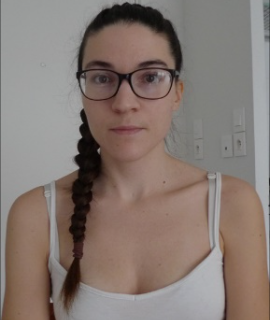Title : Effect of high light stress on the photosynthesis of a shade demanding plant: Panax ginseng C.A. Meyer
Abstract:
Panax ginseng C.A. Meyer is a shade species. This plant optimal growth irradiance is comprised between 5% and 20% of full sunlight(Proctor & Palmer 2017; Li 1995; Parmenter & Littlejohn 1998). If receiving too much light, leaves could suffer from photoinhibition of photosynthesis. Growing Panax ginseng plants under too much light during prolonged period, could cause photobleaching and premature leaf death(Proctor & Palmer 2017). We investigated the photosynthesis responses in 3 yearsPanax ginseng C.A. Meyer plants. Two light levels were applied on greenhouse grown plants. Low : 35 µmol(photons).m-2.s-1 corresponding to 5% of full sunlight; and high: between 100 and 150 µmol(photons).m-2.s-1 corresponding to 15% of ambient light. This two levels corresponding to the levels used in literature to assess light effect on ginseng plants photosynthesis (Jang et al. 2015; Chen et al. 2016; Lee et al. 2012). They were combined in 4 treatments: Control (always Low); M1: High only during 2 weeks in June; M2 : High only during 2 days in July ; M3: High 2 weeks in June and 2 days in July. The 2 weeks of high light stress applied in June (early in the vegetal cycle) correspond to a pre-treatment in order to observe plant plasticity response to stress (M1 and M3). The relationship between net photosynthesis assimilation (Anet) and photon flux density (PFD) was fitted to equation model from (Ye 2007) : Anet = φ (Io_Icomp) x [(1 – β x I)/(1 + ϒx I)] x (I - I comp). With φ (Io_Icomp) = quantum yield in the range of Io to I comp [µmol(CO2 ).µmol-1(photons)], β and ϒ = adjusting factor, I = photosynthetic photon flux density [µmol(photons).m-2.s-1], I comp = light compensation point [µmol(photons).m2 .s-1]. The quantum yield and light compensation point were estimated by the slope and intercept of the linear region of the light response curve respectively. The maximum photosynthesis rate (Pgmax)never exceed 2.4µmol(CO2 ).m-2.s-1 when plants were always grown at optimal irradiance (control). In plants grown at high light intensity in June and July (M3), net photosynthesis rate could not exceed 1.8µmol.(CO2 ).m-2.s-1. A significant difference was observed between P gmax of plants grown at high light intensity in June and July (M3) (1.8 µmol(CO2 ).m-2.s-1) and Pgmax of plants grown at high intensity only in June (M1) (2.7 µmol(CO2 ).m2 .s-1).For Panax notoginseng and Panax ginseng plants the same trends were observed (Chen et al. 2016; Jang et al. 2015), but the maximum photosynthesis rate found was higher for Panax notoginseng(between 4 and 5 µmol(CO2 ).m-2.s-1)than Panax ginseng(Chen et al. 2016). This could be due to the species or to the difference of temperature during measure period in Toulouse, France and Yunnan Province, China. Indeed Panax ginseng plants are very sensitive to high temperature (Lee et al. 2012). Thus, it seems that when strongly stressed in June, plants displayed some plasticity and then can have better or normal photosynthetic activity when return under optimal light. However, when stressed in June and July, ginseng plants couldn’t adapt and thus have very low photosynthesis rate when return under optimal light. The φPSII (PSII quantum yield) for low PFD: 50µmol(photons).m-2.s-1 is significantly higher for the control plants (0.63 µmol(CO2 ).µmol-1(photons)) compared to plants which were stressed in June and July (M3) (0.31 µmol(CO2 ).µmol-1(photons)). Besides, NPQ (Non Photochemical Quenching) seems to be higher for M3 plants than for control plants and less stress plants (M1 and M2). Thus it seems that Panax ginseng plants suffer from photoinhibition when grown at high light level in June and July but not when grown under high light only in June (leaves plasticity).



